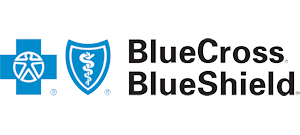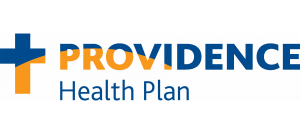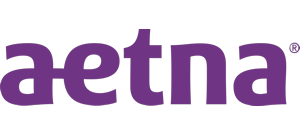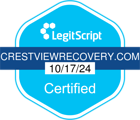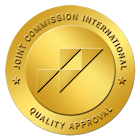At Crestview Recovery, while we do not provide detox services, we specialize in residential treatment for opioid addiction, supporting clients through the critical phase after detox to build a strong foundation for recovery.
Healing Begins Here
When Do Opioid Withdrawal Symptoms First Appear?
Short-acting opioids like heroin, oxycodone (immediate release), and hydrocodone cause withdrawal symptoms to appear quickly, typically within 6 to 12 hours after the last dose. Individuals often describe a sense of unease, restlessness, and anxiety during these first hours. They may begin to sweat excessively, experience yawning, and feel muscle aches that resemble early flu symptoms. Some report tearing eyes, a runny nose, and a general sense of physical discomfort.
Long-acting opioids such as methadone or extended-release versions of oxycodone delay the onset of withdrawal symptoms. These symptoms may begin 24 to 36 hours after the last dose of the medication. Although they start later, they can be longer-lasting and more drawn out, requiring careful medical management if detoxing at home is attempted, which is never recommended without supervision.

What Symptoms Appear Over Time?
In this initial phase, the body begins reacting to the absence of opioids:
- Restlessness and irritability
- Anxiety and unease
- Sweating and chills
- Muscle aches and joint pain
- Runny nose and watery eyes
- Frequent yawning
- Difficulty sleeping
These symptoms often intensify rapidly, causing a sense of dread that can lead to relapse if a person is not receiving proper support.
This is the most intense stage of opioid withdrawal:
- Severe muscle and bone pain
- Nausea, vomiting, and diarrhea
- Abdominal cramping
- Dilated pupils with light sensitivity
- Goosebumps, also known as “cold turkey”
- Elevated heart rate and blood pressure
- Emotional distress, panic attacks, and overwhelming cravings
During peak withdrawal, the body is aggressively trying to recalibrate its systems to function without opioids, leading to extreme discomfort that can last for several days.
After the peak, symptoms begin to subside but may still be uncomfortable:
- Lingering muscle aches and joint pain
- Digestive issues improve but may continue intermittently
- Fatigue and low energy levels
- Mood swings, irritability, and depression
- Continued sleep disturbances, including vivid dreams or nightmares
Some people begin to feel hopeful as symptoms subside, while others feel discouraged by lingering psychological symptoms.
How Long Does Acute Withdrawal Last?
- Heroin: 5-7 days
- Short-acting prescription opioids: 5-10 days
- Methadone: Can last up to 14-21 days
However, the timeline is not always linear. Some individuals experience waves of symptoms that come and go, making it feel like withdrawal is starting over again. This phenomenon is especially common in methadone withdrawal, which has a long half-life.
It’s important to note that while physical symptoms may resolve within two weeks, psychological symptoms can continue for months without proper treatment and support.
What Is Post-Acute Withdrawal Syndrome (PAWS)?
Common PAWS symptoms include:
- Persistent anxiety or panic attacks
- Depression and feelings of hopelessness
- Irritability, mood swings, and anger outbursts
- Fatigue and low motivation
- Insomnia or vivid, unsettling dreams
- Difficulty concentrating, memory problems, or brain fog
- Strong cravings, often triggered by stress or environmental cues
PAWS can last from several weeks to a year or more, depending on the severity of addiction and co-occurring mental health conditions. For example, someone with depression or PTSD may experience exacerbated symptoms during PAWS. Treatment programs help individuals build coping skills and resilience to manage PAWS effectively and maintain recovery.
Are Timelines Different by Opioid Type?
Heroin Withdrawal Timeline
- Symptoms begin: 6-12 hours after last use
- Peak symptoms: 48-72 hours
- Duration: Typically resolves within 5-7 days
Because heroin leaves the body quickly, symptoms come on hard and fast. This makes it extremely difficult for individuals to endure withdrawal without relapse unless they are in a structured detox program.
Prescription Opioid Withdrawal Timeline
- Short-acting opioids (e.g., oxycodone IR, hydrocodone): Symptoms begin within 8-12 hours, peak at 1-3 days, and resolve within 5-10 days.
- Extended-release opioids: Symptoms start later (24-36 hours), peak at 3-5 days, and can last up to 14 days or longer.
- Methadone: Withdrawal begins 24-36 hours after the last dose, peaks around day 3-5, and can last 2-3 weeks due to its long half-life.
These differences make it important to seek professional guidance when planning detox and treatment to avoid unexpected or dangerous withdrawal complications.

How Long Do Opioids Stay in Your System?
- Urine Tests: Most opioids are detectable for 1 – 3 days; methadone can be detected up to 7 days.
- Blood Tests: Typically detect opioids for up to 24 hours.
- Saliva Tests: Detectable for 1 – 4 days.
- Hair Tests: Can show opioid use for up to 90 days, providing a long-term record.
This information is crucial for individuals involved in legal cases, employment screenings, or those planning detoxification and treatment admissions.
How Can Treatment Help During Withdrawal?
Residential treatment provides a safe, structured environment where clients can continue stabilizing after detox. While physical symptoms may have subsided, emotional symptoms and cravings can lead to relapse without the safety net of 24/7 support.
Therapy helps clients process the psychological impact of addiction. At Crestview Recovery, individual therapy sessions use approaches like Cognitive Behavioral Therapy (CBT) and Dialectical Behavior Therapy (DBT) to address underlying trauma, distorted thinking patterns, and emotional regulation skills necessary for long-term sobriety.
Although Crestview Recovery does not prescribe detox medications on-site, we support clients who are prescribed medications like Suboxone by their detox providers. MAT can ease PAWS symptoms, manage cravings, and reduce relapse risk when integrated with therapy and holistic care.
Residential treatment fosters peer connections, reducing isolation and building motivation through shared experiences and activities. Group therapy sessions and sober recreational activities create a community where clients can practice new coping skills in real-time.
Addiction is a chronic condition, and relapse prevention is key. Treatment programs teach clients how to identify triggers, manage stress, and build daily routines that support sobriety. Aftercare planning ensures a smooth transition into outpatient treatment, sober living, or support groups upon program completion.
How Is Opioid Addiction Treated?
- Comprehensive Assessments: Identifying personal strengths, challenges, and treatment goals.
- Individual Therapy: Addressing trauma, mental health conditions, and behavioral patterns driving addiction.
- Group Therapy: Facilitating peer support, accountability, and skill development.
- Family Counseling: Healing relationships and building supportive family systems for long-term recovery.
- Holistic Approaches: Incorporating art therapy, mindfulness, nutrition counseling, and fitness programs to support whole-person healing.
- Life Skills and Relapse Prevention: Teaching practical skills for employment, relationships, and sober living to build confidence for reentering daily life.
Opioid addiction treatment is not a quick fix but a transformative journey. Our compassionate team at Crestview Recovery walks alongside each client, offering the tools and encouragement they need to rediscover life without substances.
Take the First Step Toward Freedom Today










